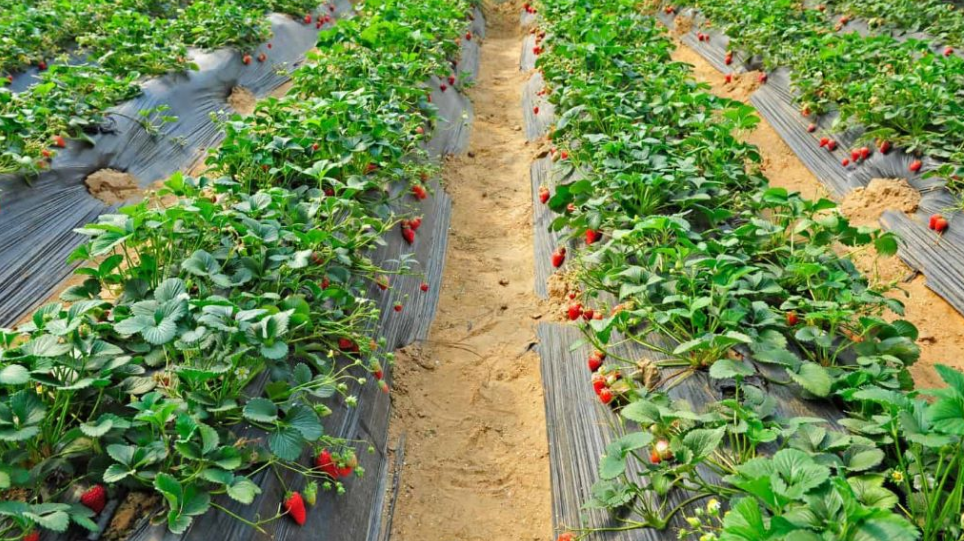
Strawberry Plant Spacing: Essential Tips for a Bountiful Harvest
Strawberry plant spacing is a crucial factor in achieving a bountiful harvest. Proper spacing ensures that each plant receives adequate sunlight, nutrients, and air circulation, which are vital for healthy growth and high fruit production. In this comprehensive guide, we will explore the best practices for spacing your strawberry plants to maximize your yield and maintain plant health
Table of Contents
ToggleUnderstanding Strawberry Plant Growth
A. Strawberry Plant Varieties
There are three main types of strawberry plant varieties: June-bearing, everbearing, and day-neutral. Each variety has different spacing requirements based on their growth habits and fruit production. It’s important to consider the specific variety you are growing when determining the optimal spacing for your plants.
B. Growth Stages of Strawberry Plants
There are three main growth stages for strawberry plants: the establishment stage, the fruiting stage, and the runner stage.
1. Establishment Stage
During the establishment stage, the strawberry plant focuses on developing a strong root system and establishing its crown. This stage typically lasts for the first few months after planting, and it is important to provide the plants with ample water and nutrients to support healthy root development.
2. Fruiting Stage
Once the strawberry plants have established themselves, they enter the fruiting stage. This is when the plants begin to produce flowers and subsequently develop fruit. It is important to provide the plants with the appropriate nutrients and water during this stage to support healthy fruit development.
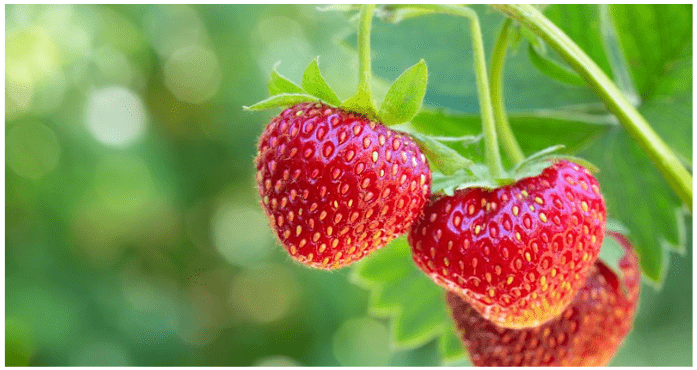
3. Runner Stage
During the runner stage, the strawberry plants produce long stems called runners, which can be used to propagate new plants. It is important to manage the number of runners on each plant to ensure that the plant’s energy is focused on fruit production rather than excessive runner development.
By understanding these growth stages, growers can provide the appropriate care and support to their strawberry plant sat each stage of their development.
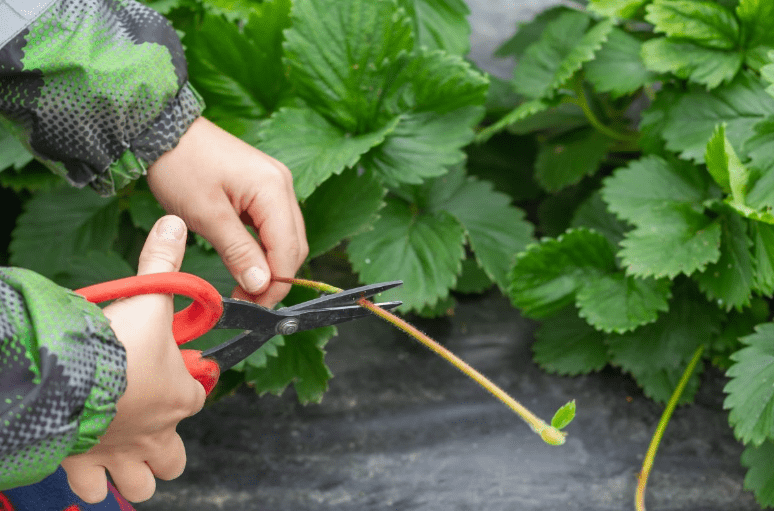
Importance of Proper Plant Spacing
A. Benefits of Correct Spacing
Proper plant spacing is essential for the healthy growth and development of strawberry plants. When plants are spaced correctly, they have access to adequate sunlight, air circulation, and nutrients, which are crucial for optimal growth. This can help prevent diseases and improve overall plant vigor. Additionally, proper spacing allows for easier access to the plants for maintenance and harvesting. By giving each plant enough space to thrive, growers can maximize their yield and overall plant health.
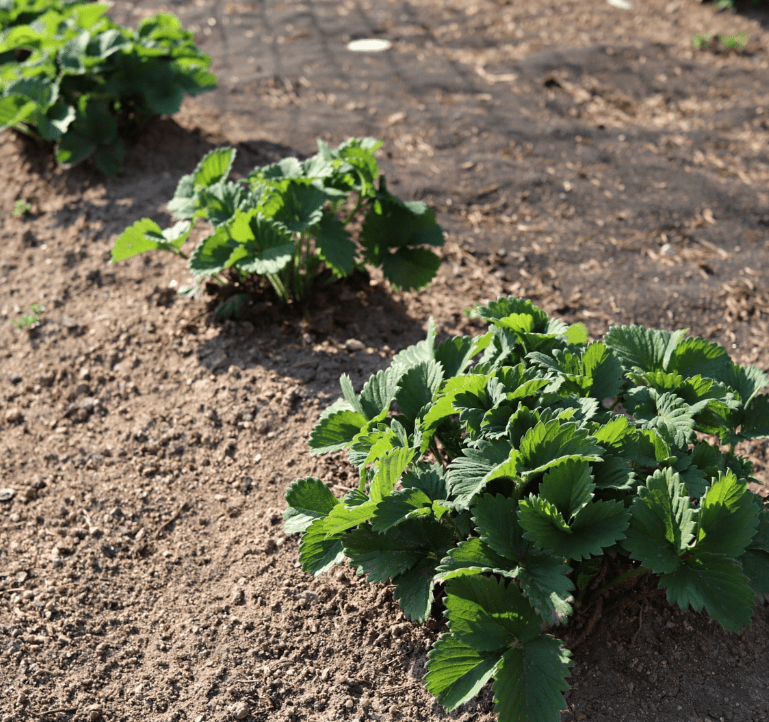
B. Consequences of Improper Spacing
Improper spacing of plants can lead to a variet of negative consequences. When plants are too close together, they may compete for sunlight, water, and nutrients, leading to stunted growth and reduced yield. Overcrowded plants are also more susceptible to diseases and pests, as air circulation is restricted. Additionally, harvesting and maintenance become more difficult when plants are not properly spaced, leading to decreased efficiency and potential damage to the plants. Overall, improper spacing can significantly impact the health and productivity of the plants.
Recommended Spacing Guidelines
A. General Spacing Recommendations
Spacing recommendations can vary depending on the specific type of plant, but there are some general guidelines that can help ensure proper spacing. For most garden vegetables, a good rule of thumb is to space plants based on their expected mature size. This often means leaving enough space between plants to allow for adequate air circulation and to prevent overcrowding. In general, most vegetable plants need at least 12-18 inches of space between them. However, it’s important to consult specific planting guides for each type of plant to ensure the proper spacing for optimal growth and yield. Additionally, it’s important to consider the mature size of the plants and plan for their growth over the duration of the growing season. Proper spacing is essential for healthy and productive plants.
1. Row spacing: distance between rows
Row spacing is an important factor to consider when planting crops. The distance between rows depends on the specific type of plant and its mature size. In general, row spacing for most vegetable plants should be at least 18-36 inches apart. This allows for easy access for watering, weeding, and harvesting. However, it’s important to consult specific planting guides for each type of plant to ensure the proper row spacing for optimal growth and yield. Additionally, some plants may require wider row spacing to accommodate their mature size and ensure proper air circulation. Overall, proper row spacing is essential for healthy and productive plants.
2. In-row spacing: distance between plants within a row
In-row spacing, or the distance between plants within a row, is also crucial for plant health and productivity. Similar to row spacing, the specific in-row spacing will vary depending on the type of plant and its mature size. In general, most vegetable plants should be spaced 6-18 inches apart within the row. This allows for sufficient room for each plant to develop and access necessary resources such as water, nutrients, and sunlight. It also helps to prevent overcrowding, which can lead to competition for resources and increased risk of disease. Proper in-row spacing is essential for ensuring plants have the space they need to thrive and produce a healthy yield. As with row spacing, it’s important to consult planting guides for specific recommendations for each type of plant.
B. Spacing for Different Strawberry Varieties
1. June-bearing strawberries
For June-bearing strawberries, it’s generally recommended to space the plants about 18-24 inches apart within the row. This allows for enough room for the plants to spread out and produce runners, while still ensuring sufficient access to resources. Optimal spacing can vary depending on the specific variety and growing conditions, so it’s always best to refer to planting guides or consult with an expert for the best spacing recommendations for your specific strawberry variety.
2. Everbearing strawberries
For everbearing strawberries, the recommended spacing can be slightly closer, typically around 12-18 inches apart within the row. These plants tend to be more compact and produce fruit throughout the growing season, so a closer spacing allows for more plants to be grown in a given area. As with June-bearing strawberries, it’s important to refer to planting guides or consult with an expert to determine the best spacing for your specific variety of everbearing strawberries. Proper spacing is crucial for ensuring the health and productivity of your plants.
3. Day-neutral strawberries.
For day-neutral strawberries, the recommended spacing is similar to everbearing strawberries, typically around 12-18 inches apart within the row. Day-neutral strawberries also produce fruit throughout the growing season and have a more compact growth habit, allowing for closer spacing. As always, it’s important to refer to planting guides or consult with an expert to determine the best spacing for your specific variety of day-neutral strawberries to ensure optimal plant health and productivity.
C. Adjusting Spacing for Container Gardening
When growing day-neutral strawberries in a container, you can adjust the spacing to accommodate the limited space. Typically, you can space day-neutral strawberries around 8-12 inches apart within the container to allow for proper growth and production. It’s important to consider the root system of the plants and provide enough space for them to thrive. Keep in mind that proper spacing is crucial for the health and productivity of your day-neutral strawberry plants, so it’s always best to refer to planting guides or consult with an expert to determine the best spacing for your specific variety.
Preparing Your Garden for Planting
A. Soil Preparation
Soil Preparation is an essential step in ensuring the success of your strawberry plants. Before planting, make sure to prepare the soil by removing any weeds and adding organic matter, such as compost or well-rotted manure, to improve the soil’s fertility and structure. It’s also a good idea to test the soil pH and adjust it to the optimal range for strawberries, which is typically between 5.5 and 6.5. Adequate soil preparation will provide your strawberry plants with the necessary nutrients and environment for healthy growth and bountiful harvest.
B. Garden Layout Planning
When planning the layout of your garden for planting day-neutral strawberry plants, it’s important to consider the root system of the plants and provide enough space for them to thrive. Keep in mind that proper spacing is crucial for the health and productivity of your strawberry plants, so it’s always best to refer to planting guides or consult with an expert to determine the best spacing for your specific variety. This will ensure that your plants have enough room to spread their roots and receive the necessary nutrients and water for optimal growth. Additionally, planning the layout of your garden will help you make the most of the available space and maximize the yield of your day-neutral strawberries.
C. Installing Irrigation Systems
When it comes to installing irrigation systems for your strawberry plants, it’s important to consider the water needs of the plants and the specific requirements of your garden. Day-neutral strawberries, in particular, require consistent and adequate moisture to thrive, so having a reliable irrigation system in place is essential. There are various options for irrigation systems, such as drip irrigation or soaker hoses, that can provide the necessary water to your plants while minimizing water waste. It’s important to consider factors such as water pressure, coverage area, and scheduling when choosing and installing an irrigation system. Proper irrigation will ensure that your day-neutral strawberry plants receive the moisture they need for healthy growth and bountiful harvest.
Planting Strawberries
A. Planting Techniques
When it comes to planting strawberries, it’s important to follow certain techniques to ensure the success of your crop. First, you’ll want to choose a sunny location with well-draining soil for your strawberry plants. Proper spacing is also crucial, as strawberries need room to spread and grow. When planting, be sure to set the roots at the correct depth and water the plants well to help them establish. Additionally, it’s important to consider the variety of strawberries you’re planting, as different types may have specific planting requirements. By following proper planting techniques, you can set your strawberries up for a strong start and a successful growing season.
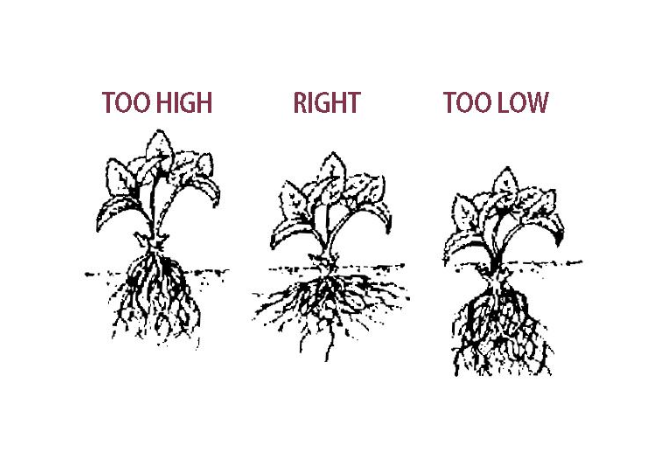
B. Caring for Newly Planted Strawberries
After planting your strawberries, it’s important to provide proper care to help them thrive. Be sure to water your newly planted strawberries regularly, as they need consistent moisture to establish themselves. Mulching around the plants can help retain moisture and prevent weeds from competing with your strawberries for nutrients. Additionally, keep an eye out for any pests or diseases that may affect your plants and take appropriate measures to protect them. Finally, consider using a balanced fertilizer to provide essential nutrients for your strawberries as they grow. With proper care, your newly planted strawberries will have the best chance of producing a successful harvest.
Maintaining Proper Spacing Throughout the Season
A. Runner Management
To ensure that your strawberries maintain proper spacing throughout the season, it’s important to manage their runners. As the plants grow, they will produce runners, which are essentially new plants that can crowd the original plants if left unchecked. You can manage runners by either allowing them to root and create new plants, or by trimming them to maintain a desired spacing between plants. By regularly checking and managing the runners, you can ensure that your strawberries have enough space to grow and produce healthy fruits. This will also help prevent overcrowding and make it easier to care for and harvest your strawberries.
B. Regular Pruning and Thinning
In addition to managing runners, it’s important to regularly prune and thin your strawberry plants. This involves removing any dead or diseased leaves, as well as thinning out overcrowded areas to ensure that each plant has enough space to thrive. By keeping the plants well-spaced and properly pruned, you can promote better air circulation, reduce the risk of disease, and encourage healthier growth and fruit production. Regular pruning and thinning throughout the season will help your strawberries reach their full potential and provide a successful harvest.
C. Mulching and Weed Control
Mulching and controlling weeds are also critical for the health and productivity of your strawberry plants. Mulching with straw, pine needles, or plastic can help to retain moisture, suppress weeds, and protect the fruit from rotting on the ground. This can also help to maintain a consistent soil temperature and reduce the risk of soil-borne diseases. Additionally, regular weeding is essential to prevent competition for nutrients and water, as well as to reduce the risk of pests and diseases. By maintaining a clean and mulched growing area, you can create optimal growing conditions for your strawberries and improve the overall quality and quantity of your harvest.
Monitoring and Adjusting Spacing
A. Seasonal Adjustments
When growing strawberries, it’s important to monitor and adjust the spacing of your plants as the season progresses. This is necessary to ensure that the plants have enough room to grow and produce healthy fruit. As the plants grow, you may need to thin them out to maintain proper spacing and allow for good air circulation. This can help prevent diseases and improve the overall health of the plants. Additionally, adjusting the spacing between rows can make it easier to maintain the plants and harvest the fruit. Keeping an eye on the spacing and making adjustments as needed can help you maximize the productivity of your strawberry plants.
B. Pest and Disease Management
When it comes to pest and disease management in strawberry plants, it’s important to monitor for any signs of pests or diseases and take action as needed. Keep a close eye on your plants for any signs of damage or infestation, such as holes in the leaves are wilting. If you notice any issues, it’s important to identify the problem and take appropriate measures to control it. This may involve using organic pest control methods or applying fungicides to prevent the spread of disease. Proper pest and disease management can help ensure the health and productivity of your strawberry plants. Regular monitoring and taking action as needed can help you stay on top of any potential issues and keep your plants healthy.
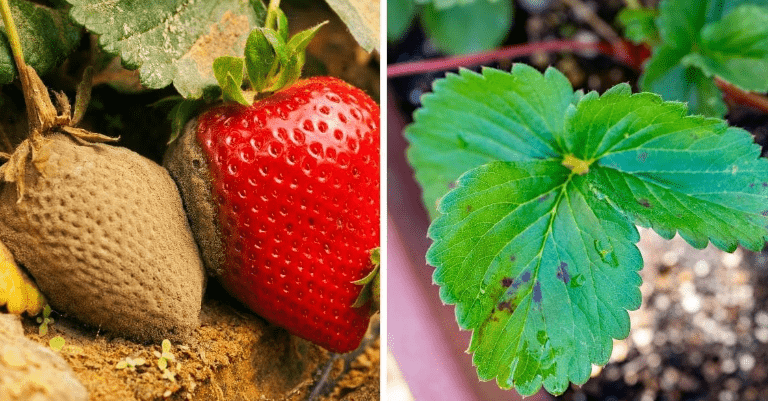
Harvesting and Post-Harvest Care
A. Harvesting Techniques
When it comes to harvesting strawberries, it’s important to do so carefully to avoid damaging the fruit. To properly harvest strawberries, simply grasp the berry between your thumb and forefinger and gently twist it off the stem. Be sure to handle the delicate fruit with care to prevent bruising. It’s best to harvest strawberries when they are fully ripe, as they won’t continue to ripen after being picked. After harvesting, it’s important to handle the fruit gently and store them in a cool place to prolong their freshness. Proper post-harvest care, such as refrigeration or freezing, can help maintain the quality of the strawberries for longer periods of time. Following these techniques can help you enjoy the fruits of your labor for as long as possible.
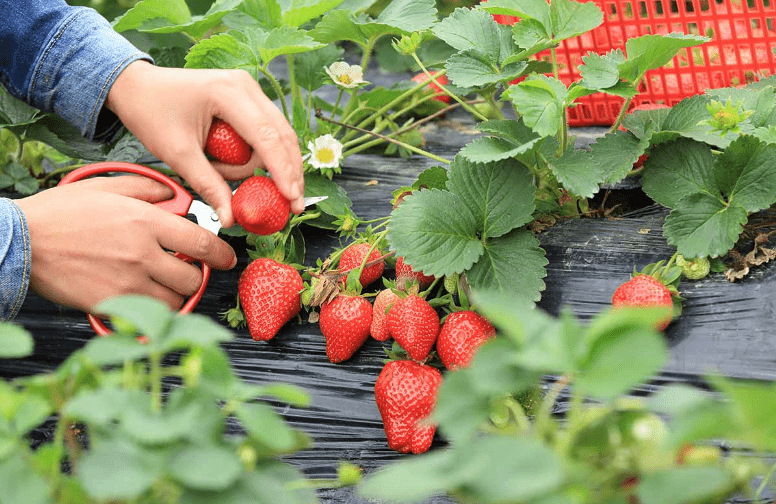
B. Post-Harvest Plant Care
Post-Harvest Plant Care is essential to ensure the longevity of your strawberry plants and the quality of the fruit they produce. After harvesting your strawberries, it’s important to take care of the plants to ensure they continue to produce bountiful harvests in the future. This includes removing any old or diseased leaves, maintaining a consistent watering schedule, and applying a balanced fertilizer to replenish the nutrients in the soil. It’s also important to monitor the plants for signs of pests or disease and take appropriate measures to prevent any damage. By providing proper post-harvest care to your strawberry plants, you can help them thrive and continue to produce delicious strawberries for years to come.
In conclusion, proper spacing of your strawberry plants is crucial for a bountiful harvest. By following the recommended spacing guidelines, you can ensure that your plants have enough room to grow and produce high-quality fruit. Remember to consider the specific variety of strawberries you are planting, as different varieties may require slightly different spacing. With the right spacing and care, you can look forward to a plentiful harvest of delicious strawberries. Happy planting!
Frequently Asked Questions (FAQs)
It is recommended to space your strawberry plants about 18-24 inches apart in rows that are 3-4 feet apart. This allows for proper air circulation and room for the plants to grow and produce healthy fruit.
While it may be tempting to plant your strawberry plants closer together to save space, it is important to give them enough room to grow and thrive. Crowded plants can lead to disease and reduced fruit production.
Proper plant spacing allows for better air circulation, which can help prevent diseases such as mold and mildew. It also ensures that each plant has access to sunlight and nutrients, leading to healthier and more bountiful harvests.
Different varieties of strawberries may have slightly different spacing requirements, so it’s best to follow the specific recommendations for each variety. Some varieties may need more or less space to spread out and produce fruit effectively.
Before planting, use a measuring tape to mark out the appropriate spacing for your rows and individual plants. This will help ensure that each plant has the necessary room to grow and thrive.
If you realize that your plants are too close together after planting, you may need to carefully transplant them to the proper spacing. Be gentle with the roots and soil to minimize stress on the plants.
In addition to proper spacing, it’s important to consider the overall growing conditions for your strawberry plants, including soil quality, watering, and fertilization. These factors can also impact the health and productivity of your plants.
One common mistake is overcrowding plants, which can lead to reduced airflow and increased risk of disease. It’s also important to consider the mature size of the plants and give them enough room to spread out as they grow.
